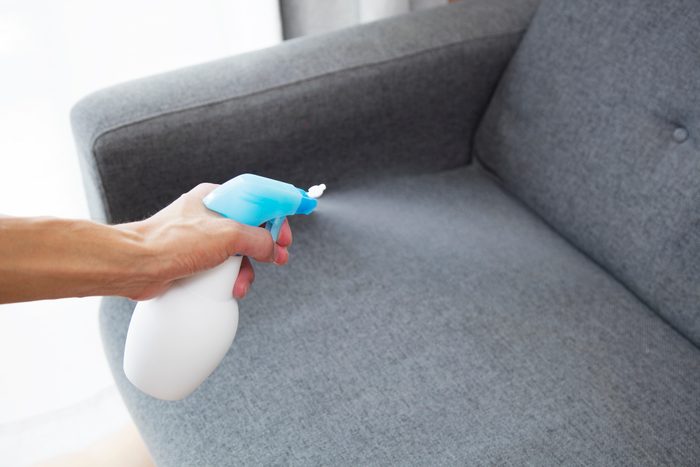
Create an Apple Cider Vinegar Spray
Apple cider vinegar (ACV) features a strong scent and an unpleasant bitter/sour taste, so it should stop your dog from chewing whatever you spray it on. It also won’t hurt them if they give it a little lick. It’s my top choice for natural pest control, too.
Materials
- Apple cider vinegar;
- Water;
- Spray bottle.
Steps
- Mix one part apple cider vinegar to five parts water in a spray bottle.
- Test on a small, hidden area to ensure it doesn’t damage the material.
- Apply the mixture to the furniture your dog chews.
- Reapply as needed.
- Avoid spraying directly on your dog.
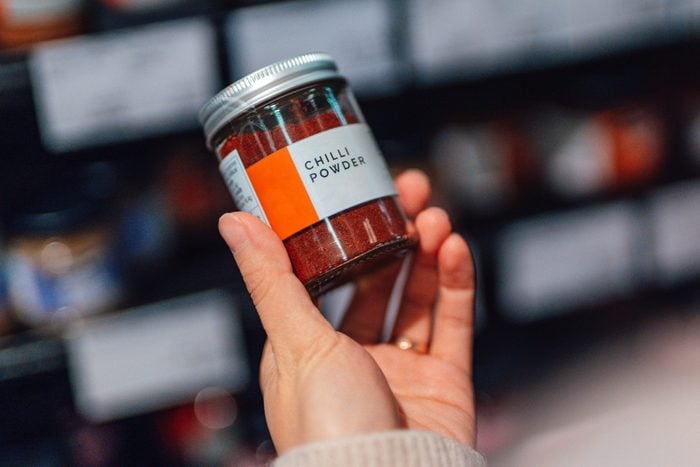
Prepare a Mild Chili Pepper Spray
Dogs don’t generally enjoy hot, spicy flavors, so a mild chili pepper spray makes a great chew deterrent. We use only a small quantity of mild chili pepper powder to avoid causing the dog any discomfort.
Materials
- One tablespoon mild chili or cayenne powder;
- One quart water;
- Spray bottle.
Steps
- Combine chili powder and water in the spray bottle. Shake well.
- Apply to a hidden area of furniture to ensure no damage or discoloration.
- Lightly spray the furniture your dog chews, focusing on frequent spots.
- Reapply regularly, especially after cleaning furniture or if your dog shows renewed interest.
- Avoid your dog’s eyes and nose. Store spray out of reach. If your dog shows discomfort or an allergic reaction, discontinue use and consult your veterinarian.
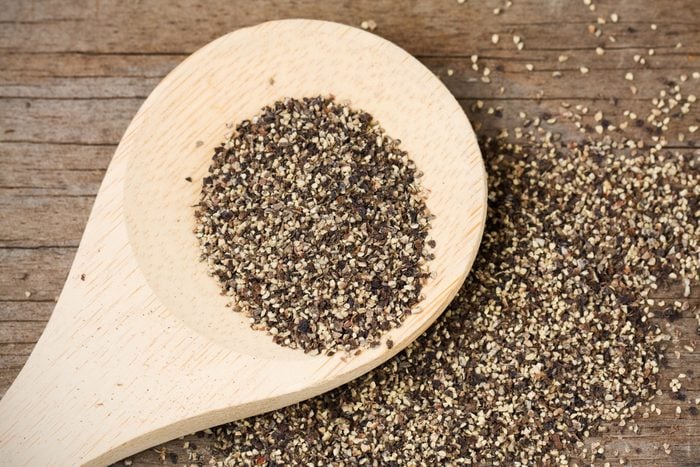
Use a Black Pepper Rub
Black pepper is strong, but again, it won’t hurt your dog if they lick it in small quantities. So it makes a great chew deterrent.
Materials
- Ground black pepper;
- Water;
- Small bowl and spoon;
- Kitchen towel or clean cloth.
Steps
- Mix one tablespoon ground black pepper with one tablespoon water to form a paste.
- Apply the paste to a cloth and test on a small, hidden area.
- Rub pepper paste onto the furniture.
- Reapply as necessary.
- Avoid direct contact with your dog’s skin and eyes.
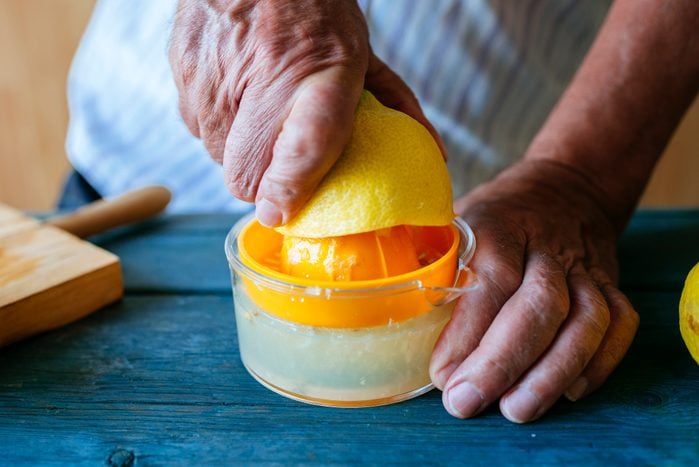
Employ a Lemon Juice Solution
Dogs don’t like citrus or anything sour, so a little lemon juice mixed with water is a great choice
Materials
- One lemon;
- Water;
- Spray bottle.
Steps
- Combine one cup water with two tablespoons lemon juice in a spray bottle.
- Shake well.
- Test on a small, hidden area first. Remember, lemon juice is acidic, so even in this low concentration it may stain or lighten some materials.
- Apply the mixture to the furniture.
- Reapply periodically.
- Avoid spraying directly on your dog.
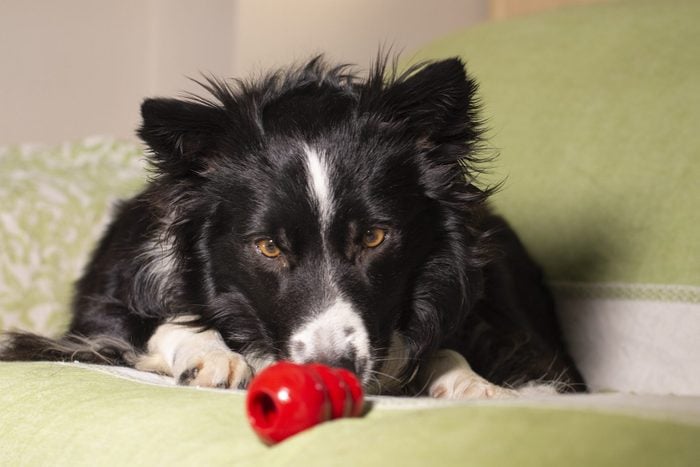
Distract With a DIY Frozen Treat
Give your pup something fun, tasty and long-lasting, like a frozen Kong toy. There are loads of recipes you can use, depending on your dog’s taste preferences.
Materials
- Fillable Kong toy;
- Filling ingredients;
- Straw.
Steps
- Choose a Kong that’s the right size for your dog. This is super-important; a Kong that’s too small can be a choking/swallowing hazard.
- Choose some tasty fillers you can freeze. I use peanut butter made of 100% peanuts with no palm oil or xylitol, which are toxic to dogs. Or choose cream cheese, shredded meat, strawberries, blueberries, yogurt, salmon, cottage cheese and cooked pumpkin.
- Insert a straw into the middle of the Kong, making sure it sticks out both ends. That way, when it’s frozen, you can remove the straw to let air flow through the frozen toy. That way there’s no risk of suction injuries to your dog’s tongue.
- Stuff your filling in around the straw. Be careful not to close up the hole in the straw.
- Freeze until solid. Remove the straw.
- Offer the treat to your dog before you leave them alone so they’ve got something to keep them busy while you’re gone.
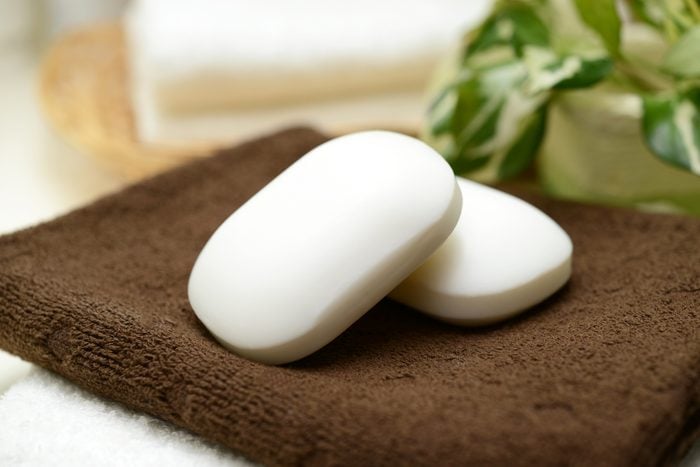
Utilize a Soap Rub
Nobody likes the taste of soap. Yuck! And our dogs are even more sensitive to taste and smell than we are.
Materials
- Mild soap; I like Dr. Bronner’s bar soap because it’s all-natural.
Steps
- Test a bar of mild, unscented soap on a small hidden area of the furniture.
- Rub the soap on the area your dog chews.
- Reapply once a week or so.
- Avoid scented or antibacterial soaps that may irritate your dog’s mouth.
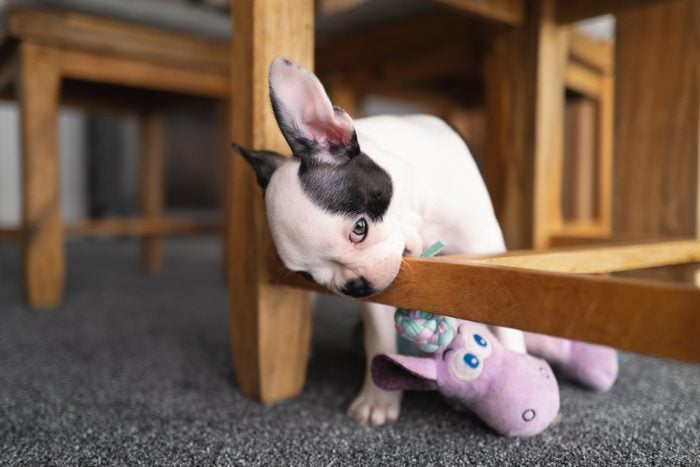
Find Out Why Your Dog Is Chewing the Furniture
Eventually, rubbing weird stuff on your furniture gets old. At some point you need to determine why your dog is chewing the furniture so you can understand how to help them.
- Is your puppy teething?
- Is your dog suddenly exhibiting signs of separation anxiety?
- Is your dog bored because it isn’t getting enough exercise and stimulation?
There’s always an emotion or reason behind this kind of behavior. It’s your job as a responsible pet parent to help your dog deal with their issues in a more positive way. If you can’t recognize any obvious triggers, contact a professional positive dog trainer in your area to come and work with you and your dog.
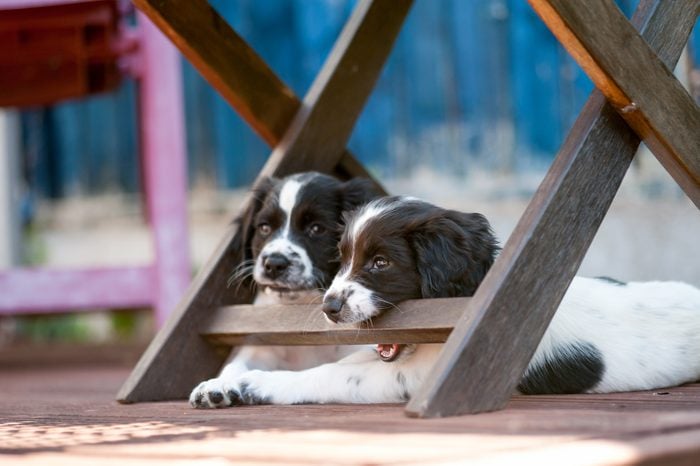
Work With Your Dog
Once you figure out the cause, take steps to help your dog and save your furniture. Just remember, it’s a process that will take time. It’s not as fast and simple as teaching your dog to sit. And it’s probably best to consult with a trainer.
But at the very least:
- Before you leave your dog alone, take them for a good walk to wear them out.
- If you know they don’t like being in silence, or they’re afraid of loud or sudden noises, leave the TV or radio on for them.
- Offer an appropriate, long-lasting chew toy or treat to keep them occupied.
- Confine them to one room to limit the damage they can do. But make that room a fun, comfortable place they’re happy to go to.
